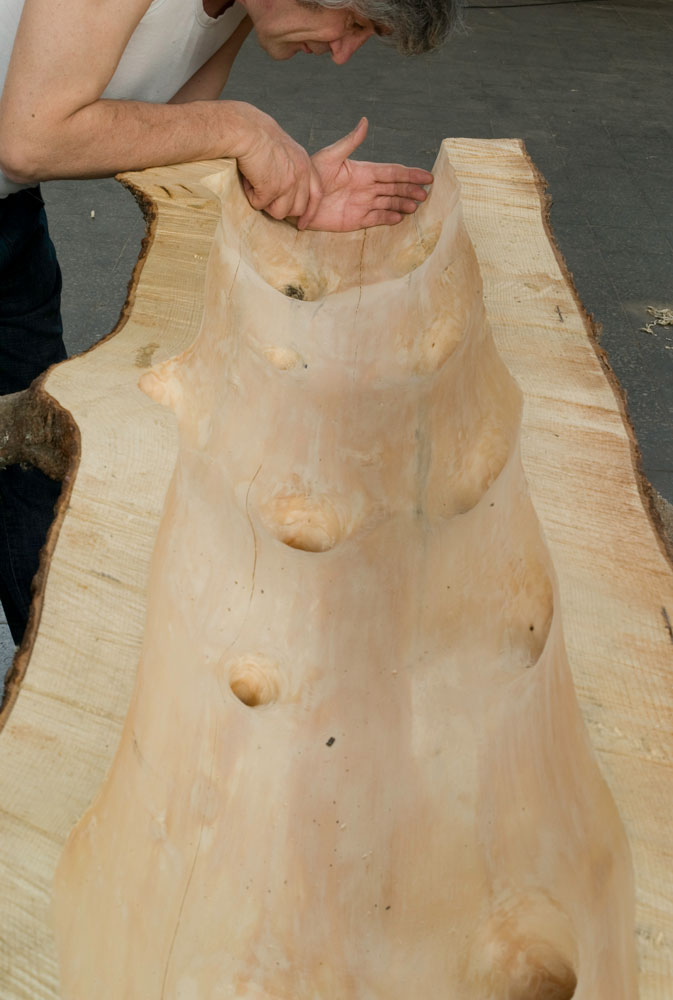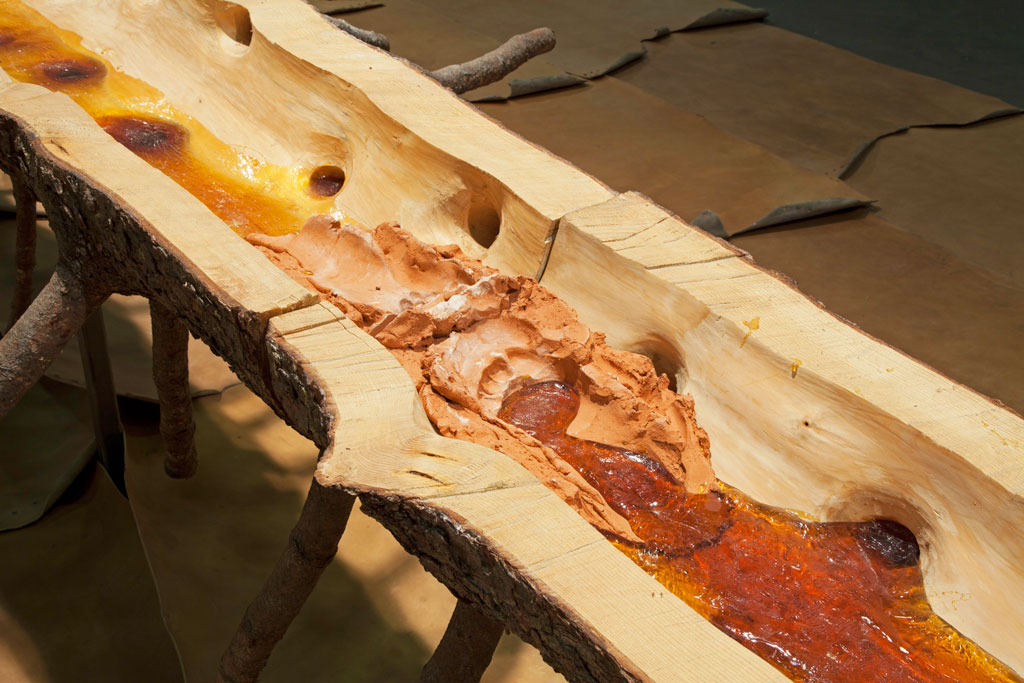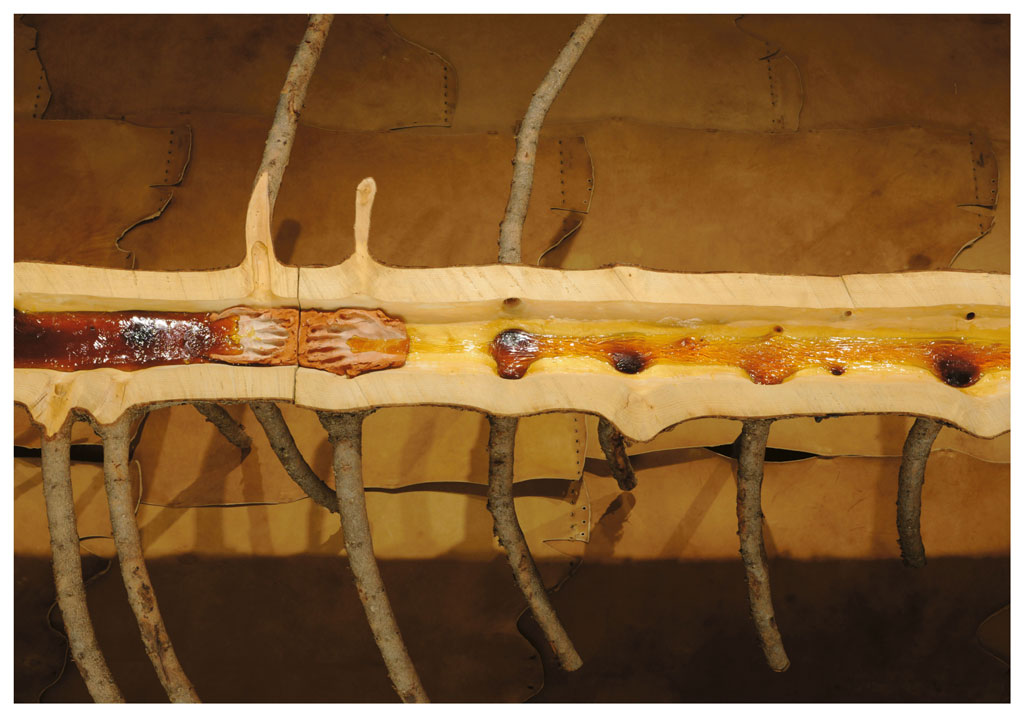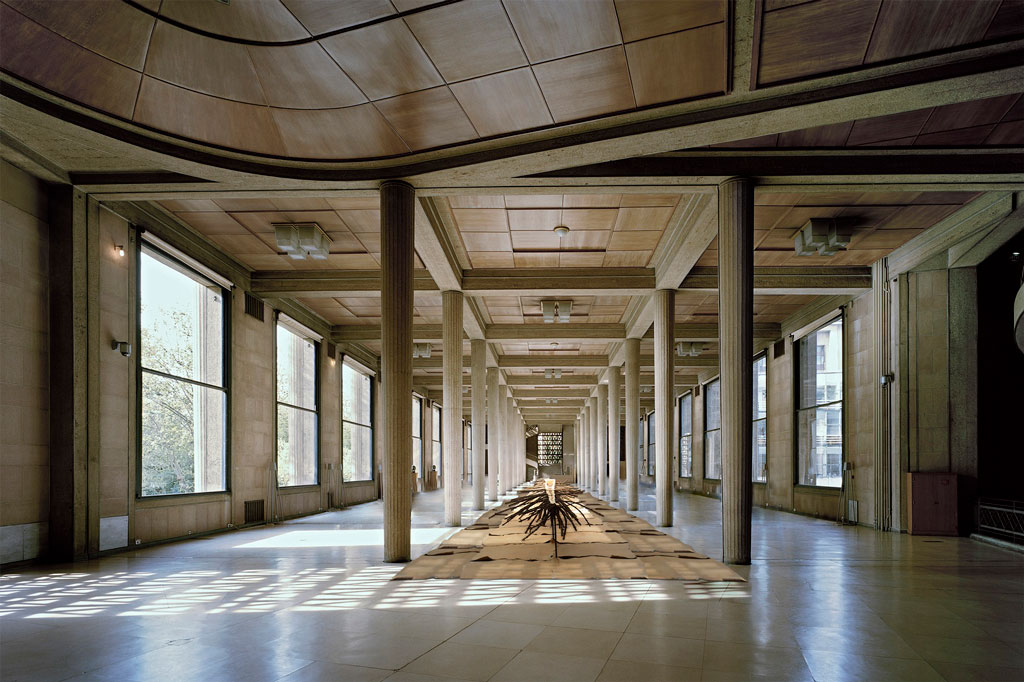ART-PRESENTATION: Giuseppe Penone-Matrice di linfa
Giuseppe Penone’s work is part of a process that is closely linked to nature, since the late 1970s and in his early works he has drawn much inspiration from it. His simple gestures, interventions or formal explorations on natural materials such a wood, bronze, marble, stone, acacia thorns are often associated with body fragments or imprints, which connect man to nature. “What interests me, says the artist, it is when humans’ work starts to become nature”.
By Efi Michalarou
Photo: CESE ARchive

During FIAC this year, the Palais d’Iéna – the French Economic, Social and Environmental Council (CESE) has invited Giuseppe Penone to exhibit his work in its great hypostyle hall. For his first exhibition in Paris since 2013, organized in collaboration with Marian Goodman Gallery, the artist is presenting his monumental work “Matrice di Linfa”, a 46m imposing and significant work based on the morphology of a tree, elaborated through resin, terracotta and leather to show the life sap of nature. The work is accompanied by two new sculptures created especially for the exhibition. “Matrice de Linfa” a work so emblematic of Giuseppe Penone, embodies the connection between the artist and the tree. The sculpture becomes a “matrix” condensing the essence of his sculptural practice. It was first exhibited 10 years ago at the Ecole nationale supérieure des beaux-arts in Paris. At the Palais d’Iéna, “Matrice di Linfa“ is exhibited for the first time with two sculptures from the “Pensieri di Foglie” series (2014-17). The works are installed either side of the central columns, near the space between the two parts of the tree where visitors are invited to walk. The branches and leaves in bronze created by the artist combined with naturally sculpted stones from a riverbed, form together an anthropomorphic silhouette. As with “Matrice di Linfa” the works “Pensieri di Foglie” reveal the history preserved within the materials and evoke the interdependence of man and nature. Born in Garessio, in the Italian province of Cuneo, Giuseppe Penone has been one of the best-known Arte Povera artists since 1967, the same year that Germano Celant coined the movement’s name. Penone’s work focuses on the similarity between nature and man, expressed by referring to trees, which he himself has defined as “perfect sculptures, living beings like humans, admired for their way of growing and evolving in a coordinated, never random way “. According to Penone, the story of a tree is written, marking every leaf and branch with true expressions of its identity. A comparison to human DNA also describes exactly what we are made of, with each part traceable. This combination of nature and sculpture, together with the use of unconventional materials, pervades his most important works. Penone combines such materials as bronze and gold leaf to create contrasting colors and unexpected effects.
Info: Palais d’Iéna, 9 Place d’Iéna, Paris, Duration: 15-24/10/19, Days & Hours: 11:00-18:00, www.lecese.fr





